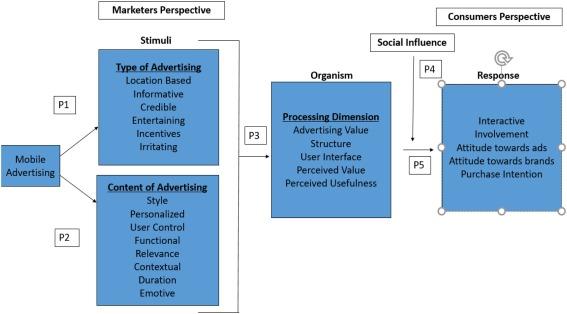Proven Case Studies: Successful Inclusion Strategies That Work
In today’s fast-evolving workplace, fostering diversity, equity, and inclusion (DEI) is no longer a mere checkbox—it’s a key driver of innovation, employee satisfaction, and business success.Companies worldwide are integrating inclusion strategies to create environments where every individual feels valued and heard. But which inclusion strategies truly work? In this article, we’ll explore proven case studies that showcase successful approaches, share teh benefits, and provide actionable tips to nurture inclusion in any institution.
Why Inclusion strategies Matter
Inclusive workplace strategies are intentional efforts designed to ensure every employee, regardless of their background, race, gender, age, ability, or orientation, feels welcomed, supported, and empowered. According to a Deloitte report, companies with strong inclusion frameworks enjoy 2.3 times higher cash flow per employee. More than policy or programs, inclusion is about embedding respect and equity into daily corporate culture.
- Attracts top talent: Inclusion signals a positive culture, attracting diverse candidates.
- Boosts innovation: Varied perspectives drive collaboration and creative problem-solving.
- Improves retention: Inclusive workplaces reduce turnover by making employees feel valued.
- Enhances reputation: Companies known for inclusion win customers’ trust and loyalty.
Real-World Case Studies: Inclusion Strategies in Action
The most compelling way to understand effective inclusion strategies is through real-world examples. Let’s explore key case studies from companies that have achieved measurable success via innovative and thoughtful inclusion initiatives.
Case Study 1: Microsoft – Empowering Accessibility
Microsoft’s empowering for Accessibility program demonstrates the power of inclusion for people with disabilities. Microsoft not only set up an internal Employee Resource Group (ERG) but also embedded accessibility into product progress, hiring, and training.
- Initiative: Companywide accessibility training; product design with input from users with disabilities; flexible work policies.
- Outcome: Increase in disabled employees’ satisfaction and productivity; award-winning accessible products.
- Key Takeaway: Inclusion strategies must be systemic and woven into the fabric of company operations.
Case Study 2: Salesforce – Inclusive Leadership and Culture
Salesforce is recognized for it’s commitment to inclusive leadership.Their approach includes rigorous DEI education for managers, regular pay equality audits, and a thriving network of Employee Resource Groups supporting women, BIPOC, LGBTQ+, and veterans.
- Initiative: Annual pay audits; extensive inclusion training; dedicated roles for DEI leadership.
- Outcome: Improved leadership diversity,95%+ employee engagement in inclusion initiatives,recognition as a top inclusive workplace.
- Key Takeaway: Leadership buy-in and accountability are essential for genuine, lasting inclusion.
Case Study 3: accenture – Data-Driven Inclusion Strategies
Accenture takes a data-driven approach to inclusion strategies, leveraging analytics to track progress and identify gaps. Annual reports, obvious targets, and a robust mentorship program for underrepresented groups support these efforts.
- Initiative: Public DEI goals; real-time analytics; mentoring and sponsorship programs.
- Outcome: Increased promotions and hires from diverse groups; tangible progress toward diversity targets.
- Key Takeaway: Data transparency and regular reporting drive accountability and continuous advancement.
Case Study 4: SAP – Autism at Work Program
SAP’s Autism at Work program creates opportunities for neurodivergent individuals. By adapting recruiting, onboarding, and management practices, SAP enables employees on the autism spectrum to thrive.
- Initiative: Specialized hiring practices; support coaches; autism inclusion-focused training for teams.
- Outcome: 90% retention rate among participants; increased team innovation and performance.
- Key Takeaway: Tailored programs unlock unique strengths and foster true workplace inclusion.
Benefits of Successful Inclusion Strategies
Integrating effective inclusion strategies not only leads to better business outcomes but also cultivates a happier, more engaged workforce. According to mckinsey research:
- Companies in the top quartile for gender diversity are 21% more likely to outperform on profitability.
- Ethnic and culturally diverse organizations are 33% more likely to outperform their peers.
Additional benefits include:
- Higher creativity and innovation through diverse perspectives
- Greater employee loyalty and reduced turnover
- Improved reputation and brand value
- Enhanced problem-solving and decision-making skills
- Wider talent pool and improved recruitment outcomes
Practical Tips for Implementing Inclusion Strategies
While each organization is unique, the following practical inclusion strategy tips can help you drive positive change:
- Secure Executive Buy-In: Engage leadership early and ensure they champion inclusion both in words and actions.
- Start Employee Resource Groups (ERGs): Facilitate safe spaces for employees with shared identities to connect, support, and advocate for meaningful change.
- Implement Ongoing Training: Provide regular DEI, bias, and cultural competence training for all staff levels.
- Review and Update Policies: Audit hiring, promotion, and onboarding processes to eliminate barriers and encourage equity.
- Use Data and Set Goals: Monitor inclusion KPIs, gather feedback, and share progress transparently.
- Celebrate Diversity: Recognize cultural events, diverse holidays, and individual contributions through companywide celebrations and communications.
- Encourage Allyship: Foster a culture where employees actively support and advocate for one another.
- Solicit Feedback Actively: Use anonymous surveys, focus groups, and open forums to listen and adapt your inclusion approach.
Conclusion: Shaping a Truly Inclusive Culture
the power of proven inclusion strategies is clear—when organizations invest in thoughtful, intentional practices, the rewards are visible in employee satisfaction, increased innovation, and sustainable business success. The case studies highlighted above prove that inclusion is not a one-size-fits-all endeavor; it requires ongoing commitment, adaptability, and genuine effort at all levels.
By embracing and implementing successful inclusion strategies, your organization can build a culture where every voice matters, diversity flourishes, and everyone has the prospect to thrive. Start your inclusion journey today—and watch your people and business reach new heights together.

